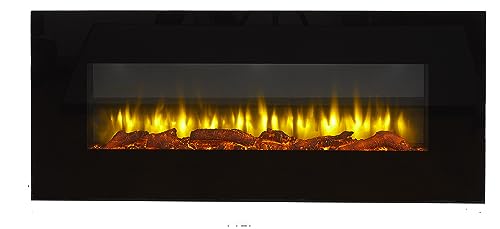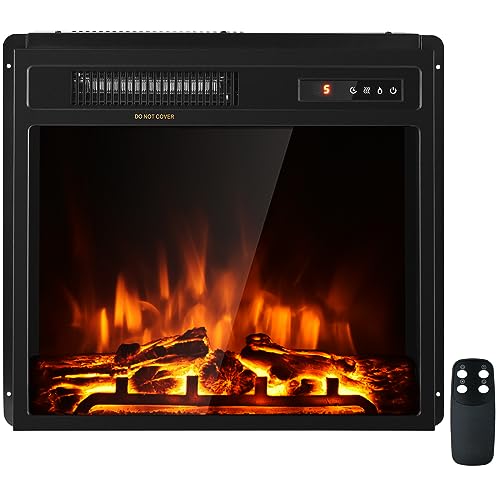9 Lessons Your Parents Taught You About Small Wood Burning Stove
페이지 정보

본문
 How Much Room Do You Have For a Small Wood Burning Stove?
How Much Room Do You Have For a Small Wood Burning Stove?wood burners near me stoves are adored by many people due to their warm and cozy atmosphere as well as the excitement of constructing the fire. There are a few things to think about when choosing the most efficient small wood-burning stove to fit in your home.
For instance, you might you want to make sure that your flue pipe can exit directly up through the section above it.
How much space do you have around your stove?
It's important to consider the space you have available around a wood stove when shopping. You'll need some space to ensure that the stove is safe and is properly installed in your home. The first step in determining how much room you have to work with is measuring the space where you want to put your stove. To accurately measure the space you need a tape measuring device. Make sure to account for the thickness of your countertops and any other surfaces that are extending into the cutouts of your stove. You should also measure the distance from the bottom of your cabinets to the ground in the event that it is you need to.
Once you know how much space you have then you can begin narrowing your choices. Begin by evaluating your stove requirements and budget. If you're on a budget, consider buying a used stove that offers good value. If you're considering buying an upgrade to your stove, you should examine the maximum Btu specifications of each model to determine which is the Best wood burning stoves fit for your space.
A stove with a high Btu rating is more efficient and will generate more heat in your home. This can help you save money and energy in the long run.
In addition to looking at Btu ratings You should also consider the size of your home and the climate. If you live in a region that has cold winters, you'll require a stove that has a high output of heat to warm your home. If you're in a region that experiences milder winters, then a stove that has a lower power output might be adequate.
If you're looking for a compact wood burning stove that can be easily modified to meet your requirements, you might want to consider one from Navigator Stove Works. The Little Cod wood stove is a highly durable, compact stove that can be equipped with a variety of features. It comes with a gallery rail in brass that lets you hang pans and pots from the stove, as well as a stainless steel cooktop that allows for improved stovetop cooking. In addition the Little Cod can be fitted with an air intake direct to increase its efficiency.
How do you want your flue system be organized?
Wood stoves are a great option to heat your home, however they can be confusing to operate. To make the most of your wood stove, you need to know the way in which the fire is created, and how to maintain an even flame. This can be done by reading the owner's manual of your stove or speaking with an engineer who is knowledgeable about heating.
The main components of a wood-burning stove include the firebox and the chimney. The firebox encloses the fire and protects it from the elements. The firebox features an air vent to regulate the flow. It is insulated. The stove also has a door that can allow the user to view the fire.
Stoves use wood that has been seasoned to serve as their primary fuel source. Seasoned conservatory wood burner is low in moisture and dry, which makes it burn more efficiently. The air vents located at the top and the bottom of the stove are used to supply the wood. The thermostatic system of the stove, which uses bimetal coils, controls the amount of air flowing through the air vents. The bimetal helix coil is comprised of two different types of metals, which expand at different rates when heated. This creates controlled airflow that is used to ignite fuel in the firebox.
It is crucial to add very small wood burning stove amounts of wood each time the fire starts to ensure a steady fire and stop it from burning out. A fire that is not under control produces dark, smelly and inefficient smoke. The more smokey the fire, the more energy is being wasted in producing heat, and the more creosote that will build up in the flue pipe.
Many cities and towns are in Smoke Control Areas, which means that the emission from wood stoves need to be reduced to the minimum. It is essential to match your stove size to the heating requirements of your home to ensure that the emissions remain within safe limits. A larger stove will produce lots of heat. However when the stove is too large for the space you live in, it may cause the flames to burn unevenly or emit uncontrolled smoke.
How Far Do You Need to place your stove away from combustion Surfaces?
Stoves shouldn't be set too close to combustible surfaces since the fire can create extremely hot gasses. To ensure that stoves are safe to use they must abide by specific guidelines and regulations. The most important of these are the distances you must keep between your stove and any combustible materials.
The exact distances will vary based on the model of stove, but the minimum distances are provided by the manufacturer either in their installation instructions (contact the manufacturer if you don't have their instructions) or in Approved Document J (Building Regulations) (contact your local building inspector for more information). It is also worth noting that your wood-burning stove must be installed on a hearth and you must utilize the floor protection specified by the stove manufacturer.
The majority of the time, this will be a layer of gypsum plaster over the slab or Small Woodburners base of concrete. Some stoves require an elaborate floor covering based on the amount of heat that is radiating down from the stove. For example, some listed stoves won't require any combustibles beneath them at all and will only need a 1/4" ceramic tile (although they usually provide an under-floor heat shield as an optional extra).
A lot of stoves are fitted with a manufacturer's heat shield which reduces the distance to combustibles even further. In certain instances this can be extended to the entire length of the chimney pipe, so it is always worth checking whether your stove offers this option.
You can also decrease the clearance requirement by covering the wall with a sheet of metal, for example aluminum. This will let you maintain the same distance from the flue pipes, but it's more expensive and you'll be required to verify that the material meets the requirements of your particular stove.
Another alternative is to frame a brick masonry wall of 3.5 inches thick within the wall combustible and finish it off with a layer hardiebacker or fireproof cladding. This will reduce the minimum clearance to just a little over six inches. You can also install interior double-wall stove pipe manufactured by the same companies who make class A double wall chimneys, which would further reduce the clearance required.
How Far Do You Have to Position Your Stove From non-combustible surfaces?
Stoves produce a lot of heat that can cause damage to surfaces not adequately protected from it. You must be aware of how far your stove is from combustible substances and utilize this information when preparing an area for its installation.
All stoves that burn wood - listed or unlisted - require protection on the floor, which is known as the hearth. It could be constructed from ceramic tiles or non-combustible stone, but it must be covered by at least 300mm on either side and 150mm in front of the stove. The purpose of this hearth is to protect the flooring from the heat generated by the stove as well as any embers falling from the fire that might be emitted when the fire is burning.
The majority of building codes define the exact distances between the stove and walls. These are typically printed on a metal tag that is attached to the stove or in the instruction manual. These guidelines may vary from region to region, so check with your local authorities for most accurate information on this topic.
Older stoves that were not UL-listed required as much as 36" of clearance from combustible walls but newer models are able to be installed much more closely. This is because they have sophisticated combustion designs that direct the majority of their heat away from rear and side walls. Certain models also have additional heat shields that can be purchased to enable a more precise installation.
The intense heat produced by wood burning stoves may cause damage or ignite combustible materials. For this reason, it is recommended to remove all decorative and ornamental objects from the immediate vicinity of the stove. It is also essential to not place anything that could ignite within 3 feet of the stove.
A good method to decrease the distance to combustible walls while ensuring safety is to use the use of a heat shield made of steel on the front and on the other side of the stove. The heat shields reflect the majority of the heat that is generated by the stove which allows you to keep the room open and airy while ensuring heat efficiency. You can buy heat shields in a separate package or build them yourself by putting up a sheet of stainless-steel 1 inch from the wall using non-combustible spaces.

- 이전글You'll Never Guess This Window Repair Near Me's Benefits 25.01.02
- 다음글The Top 2 In 1 Stroller Car Seat Gurus Are Doing Three Things 25.01.02
댓글목록
등록된 댓글이 없습니다.


